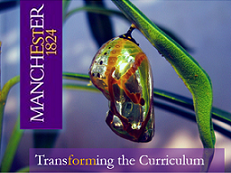Practicing Education For Sustainability In Primary School English Classroom Teaching In China by Youdan Zhang
Education for sustainability has developing into an important theme which gets increasing attention from all over the world in recent years. Generally speaking, education for sustainability aims to enable each citizen to acquire the attitudes and skills to build a sustainable future together. That means when practising education for sustainability, people should not only include core issues of sustainable development such as climate change, disaster risk reduction, biodiversity, poverty eradication and sustainable consumption into teaching content, but also try to promote learners’ competencies like critical thinking, imagining future scenarios and making decisions in a collaborative way in order to let them live responsible lives and address complex global challenges (http://en.unesco.org/themes/education-sustainable-development).

Basic education provides the underpinning for any sustainable and development education (). In this stage of education, students’ ability, habits and values are not fully shaped, which give a chance to change their attitude and train their capacity to assess and address sustainable concerns. However, there are still plenty of countries unaware of the importance of practicing education for sustainability at the basic education level, or although already aware, have not popularize it yet. There is an example of primary school English classroom teaching in China
Silent English class in China
Currently, even though English learning is widespread in primary and secondary schools in China and the English teaching methods are constantly improving, the situation on the picture can still be found in plenty of English class: English teacher stands in front of the classroom and teaching words, grammar or other knowledge related to students’ examination, while students just sit at their chairs, listening, reading, and distracting. In this kind of class, not only teaching content but also teaching methods cannot help students get any enlightenment about sustainability.
So, what can be done to practice education for sustainability in such a class? In my opinion, two aspects should be considered.
First of all, the silence in English class which has an obstacle to train student’s sustainable skills needs to be broken. Tilbury (2011) found that one of the successful education for sustainability efforts is ‘using pedagogical approaches that support active and participatory learning’. That means learning is not a process of single output of knowledge, learners need to engage directly with the material to be learned rather than simply absorb information passively from a lecture or readings. In the class mentioned above, students lack active participation like oral practice or group discussion, which is unhelpful to improve their knowledge application ability and critical thinking.
Content about sustainable and development could be included in student’s daily learning. Nolet (2015) considered that teaching for sustainability is the process by which teachers turn the broad conceptual and philosophical ideals of education for sustainability into specific elements of effective teaching practice. Including content about education for sustainability into daily teaching can help students understand and thinking about sustainable issues, and inspires interest in their discussion.
Situational teaching method: an effective way to practice education for sustainability
In order to achieve the two ideas above, situational teaching method can be considered as an effective way. It is an approach developed by British applied linguists in the 1930s to the 1960s, and which had an impact on language courses which survive in some still being used today (http://www-01.sil.org/lingualinks/LANGUAGELEARNING/WaysToApproachLanguageLearning/SituationalLanguageTeaching.htm ). By using situational teaching method, both of student’s skills and sustainability worldview can be fostered at the same time.
For example, role-playing game is one of the popular ways of using situational teaching method. Teacher usually gives a theme or a scene to students and let them participate in and play different roles. Before the start of role-playing game, students should work together and learn about the theme or scene first, and then play their different roles and discuss.
To apply the method into Education for sustainability, the theme or scene can be chosen as a problem of sustainable development such as ‘Image you are different kinds of vegetables growing in the soil, what factors can help you grow stronger and what factors may obstruct your growth?’ And then teachers can guide their discussion into the direction of natural environment or pollution. There is no doubt that learners know the meaning of the word ‘sustainability’, not because they have looked it up in a dictionary, but because they have learned the word in situations.

In addition, role-playing game can be seen as a learner-centered strategy which create opportunities for students to take the initiative to think and participate in the learning process. In the game-based oral training, students learn about how to use English to communicate with other people or solve problems in real situation rather than just think about how to spell words correctly.
This is a good start for students to develop the capacity for critical reflection and systemic thinking as well as develop the motivation to become personally engaged with sustainability issues (Nolet, 2015).
Reference:
Nolet, V. (2015). Educating for sustainability: Principles and practices for teachers. Routledge.
Tilbury, D. (2011). Education for sustainable development: An expert review of processes and learning. Paris, France: UNESCO. http://unesdoc. unesco. org/images/0019/001914/191442e. pdf. Accessed May, 20, 2014.
http://en.unesco.org/themes/education-sustainable-development

